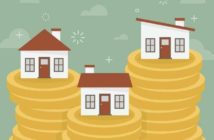More people are losing money on the resale of their properties than any time in the past three years, especially those selling apartments, CoreLogic NZ’s Chief Property Economist Kelvin Davidson says

The CoreLogic NZ Q4 Pain & Gain report shows 4% of property sold in the final three months of last year went for a price less than originally paid.
However, it’s apartment owners who felt the most pain. While it’s a much smaller segment than standalone homes, about a quarter of those who sold at the end of last year lost money on their sale. The median resale loss on apartments was $52,750.
That’s the highest it’s been in a decade, which could create a risk.
Apartments are a small segment of the overall property market, but they’re clearly a property type worth keeping an eye on over the next six to 12 months, given a tendency for them to be owned by investors – who may be more financially minded, and willing to rejig their portfolios in a low yield/high interest rate environment.
Context is important though. The same figure was about 50% during the Global Financial Crisis.
Where the pain was felt
Of all the main centres, the trend was most pronounced in Auckland, with 6.9% of those who resold properties in Q4, doing so at a loss.
Further south and Hamilton witnessed the biggest change. More than 6% of properties resold there for less than their purchase price, almost double the previous quarter.
The interesting part was most of those properties were bought and sold within just 19 months on average, which indicates interest rates are starting to bite.
A change in an owner’s financial situation could be behind a short hold period – and at the moment, rising interest rates would be a clear candidate for driving some of these sales. At the same time, other factors such as divorce or death can also drive unexpectedly short hold periods.
Scale of losses and gains
Despite the increase in loss-making sales, most people are still making money when it comes time to sell, just not as much as they were previously.
96% of properties resold in the last three months of 2022 made a profit, down almost 1% on Q3. Owner-occupiers pocketed a median profit of $313,000 and investors $343,500.
The combined median resale gain of $328,000 is down significantly from the peak of $441,000 in Q4 2021, although still remains high. There’s clear reason for this.
Hold period plays a key role in the size of any resale profit, and owner-occupiers are not generally making cash windfalls. Their gains will typically be put back into their next purchase, unless they downsize or move somewhere cheaper.
Pain & Gain outlook
These are still solid numbers for vendors, but for now the market continues to be in favour of buyers.
The housing market still faces significant challenges, especially with unemployment set to rise this year, and as new and existing borrowers face up to the possibility of mortgage rates up to 7%.
With that in mind, we can expect to see more ‘pain’ and less ‘gain’ in the property market for the rest of the year.










